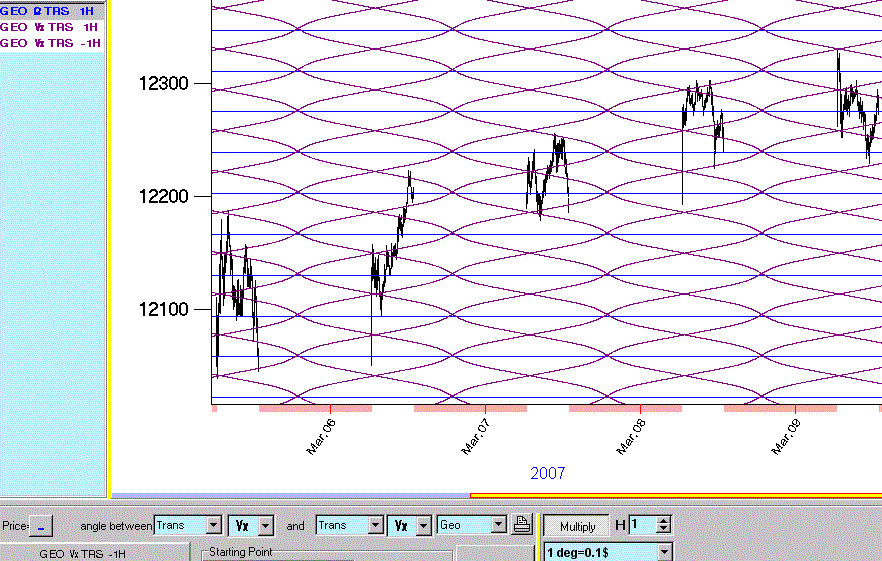
Planetary-Lines IntraDay
There appear to be two Planetary Lines (PL's) that have worked on the DJ Index for years - the North Node and the Vertex. By "work" I'm referring to having acted as support or resistance levels. Now that TS is real-time enabled its possible to use these PL's in a practical manner. Below is a 3-minute chart of the DJ Index for the past week (March 5 - 9, 2007). This was a particularly wild week coming right after a very large market fall the preceding week. For most traders this was a difficult trading week because of the many wild swings. For an overall perspective just do a quick review of the DJ Index below and see how often large swings ended right on one of these two PL's. I plot both the positive and mirror for the Vertex, just the positive for the North Node (blue). In this article we'll review a simple but potent trading method. The DJ index is updated every three seconds by the NYSE. Most of us would trade the DJ Mini (symbol YM) while doing our analysis on the DJ Index. Its because the index is updated every three seconds that this is practically possible.

After plotting the three PL lines, send them to Strategy so they are visible on TS's main screen. Next, add the MACD Histogram indicator. We'll be using it to spot momentum divergence at Planetary Lines. While we're reviewing the week, keep in mind the index scale (the Y axis).
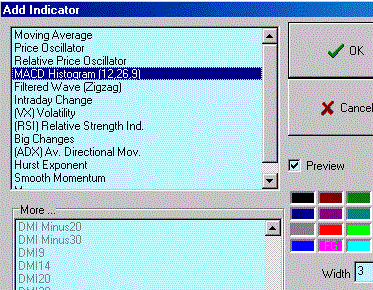
Lets review the trading week that just ended.
On Monday March 5, at 1 we see the index has risen to the Vertex PL's while at the same time the MACD Histogram has fallen - this is classic momentum divergence. While its good by itself our method is to spot momentum divergence when price is at one of our PL's. This divergence at a PL means to sell. This greatly enhances the accuracy. At 2 the Index fell below its prior pivot but the MACD was already rising - so we are ready to buy. At 3 we have a higher high but the MACD is falling - so we set up to sell. The green circled areas are another type of setup. Look at the first one - the market has been rising and it corrects to our Vertex PL's - if a pivot forms there, we're confident higher index values are coming. Next, at about 8:20(PT) the index started to fall - the second green circle shows it rallied to our Vertex PL's, then the downtrend resumed. And the third green circle is the same - if a pivot forms on one of these PL's during a correction, you're interested.
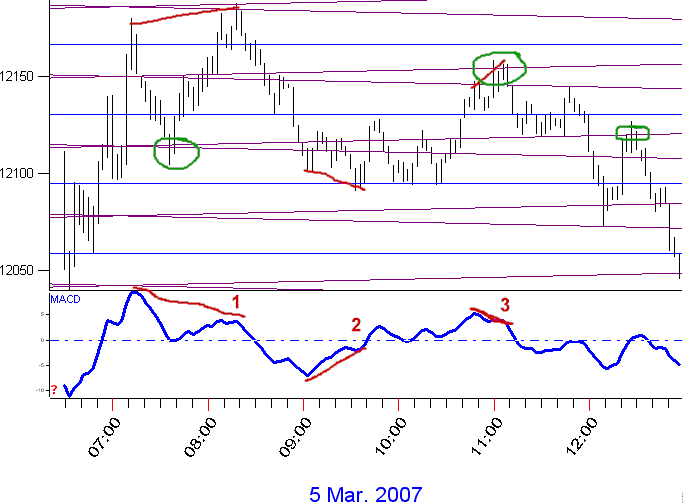
I'm skipping Tuesday March 6th as that day the Index basically just went up 250 points all day long, as a partial correction to last weeks fall. This is so abnormal its not worth studying - there were hardly any signals that day.
Wednesday March 7th was a great day for this approach. At 1 we have higher index values right on a Node PL but lower MACD - we set up to sell. At 2 we have lower Index values on a Vertex PL but a higher MACD - we set up to buy. At 3 we have higher index values at a Vertex PL but a lower MACD - we set up to sell. See if on your own you can spot any retracements (corrections in rallies, rallies in falling markets) that formed pivots on a PL, indicating the trend might resume.
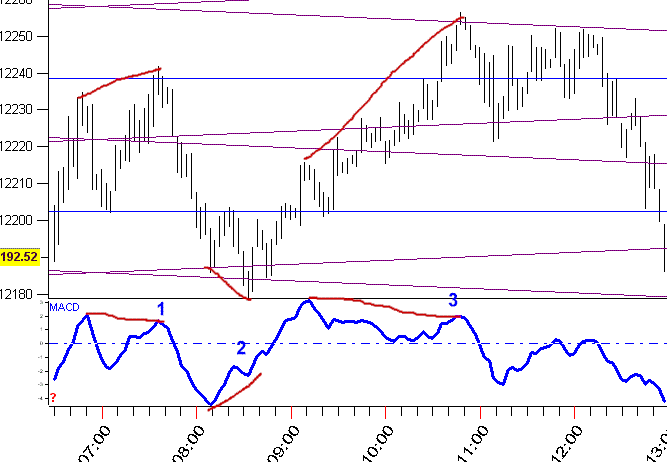
Below is Thursday March 8th, and at 1 and 2 we have the Index at PL's with MACD divergence. This chart shows another frequent occurrence - solid support and resistance for trade entry and exit in range markets. Note how often the Node PL acted as resistance or support (the green circles). This week was characterized by trending markets in reaction to last weeks strong sell-off, but this day was a range (aka rotation) day - these types of days are much more common then trend days, and we'll soon see this type of day more often. Its important to note when one of these PL's is being active as support and/or resistance.
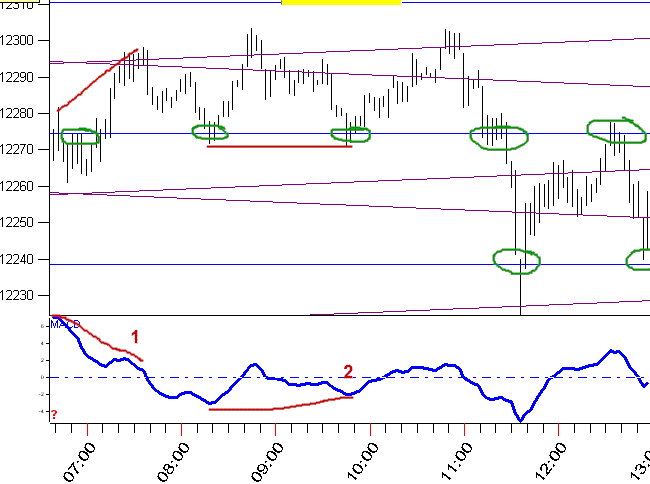
Last we have Friday March 9th. It should be fairly easy to spot setups. Generally, swings end at momentum divergence. This can be a hint as to when to take profits.
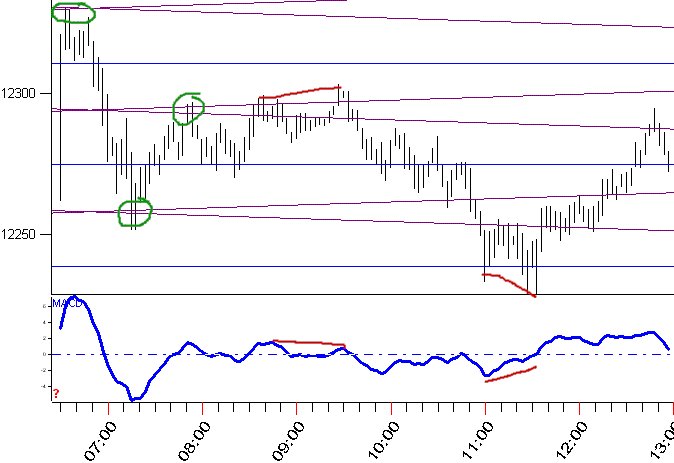
This is a very simple procedure that can give you good trade entry. It can certainly be improved by adding TS price forecasts. I would be cautious in adding more Planetary Lines though, as it may confuse more then clarify. As always, good trade entry is important but is only one component of a trade - you still must set stop-loss, decide between a trailing stop or profit objective, and decide on how many contracts to trade.
Yuri Shramenko
yurips@verizon.net
www.TechEdgeTrading.com